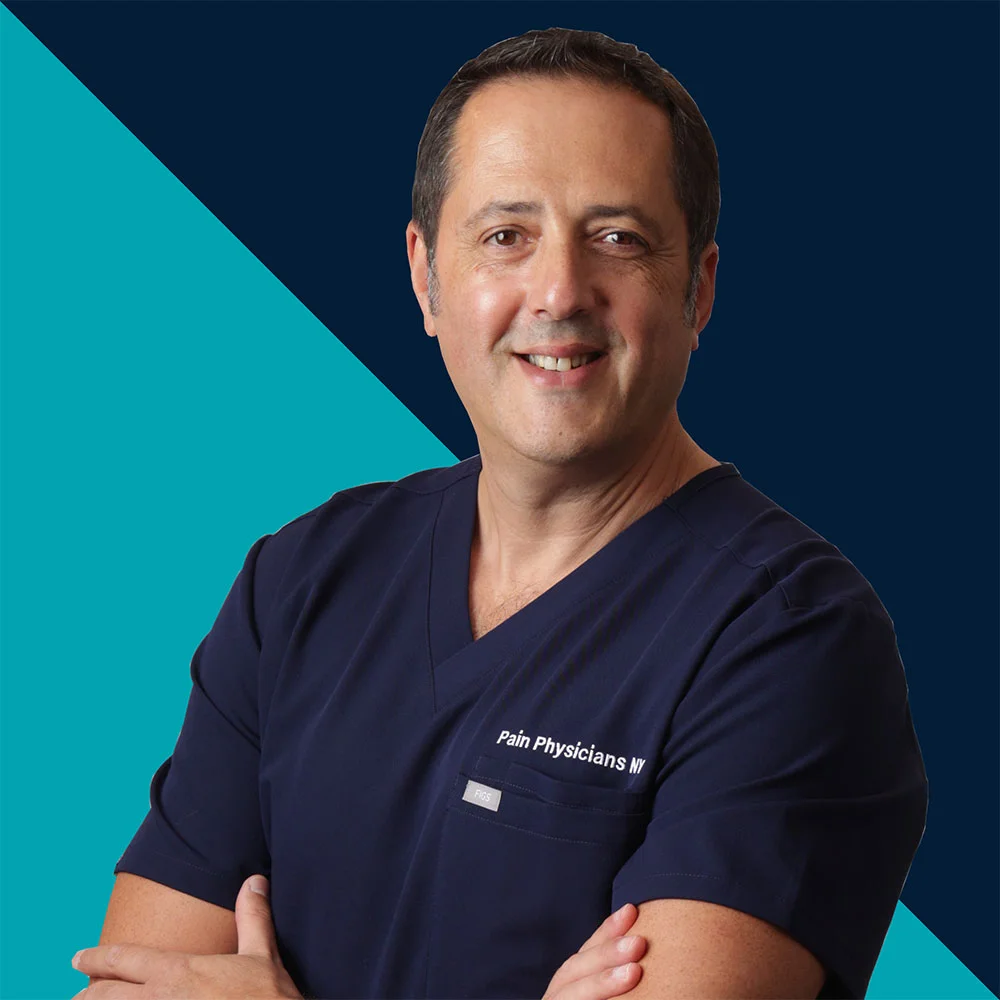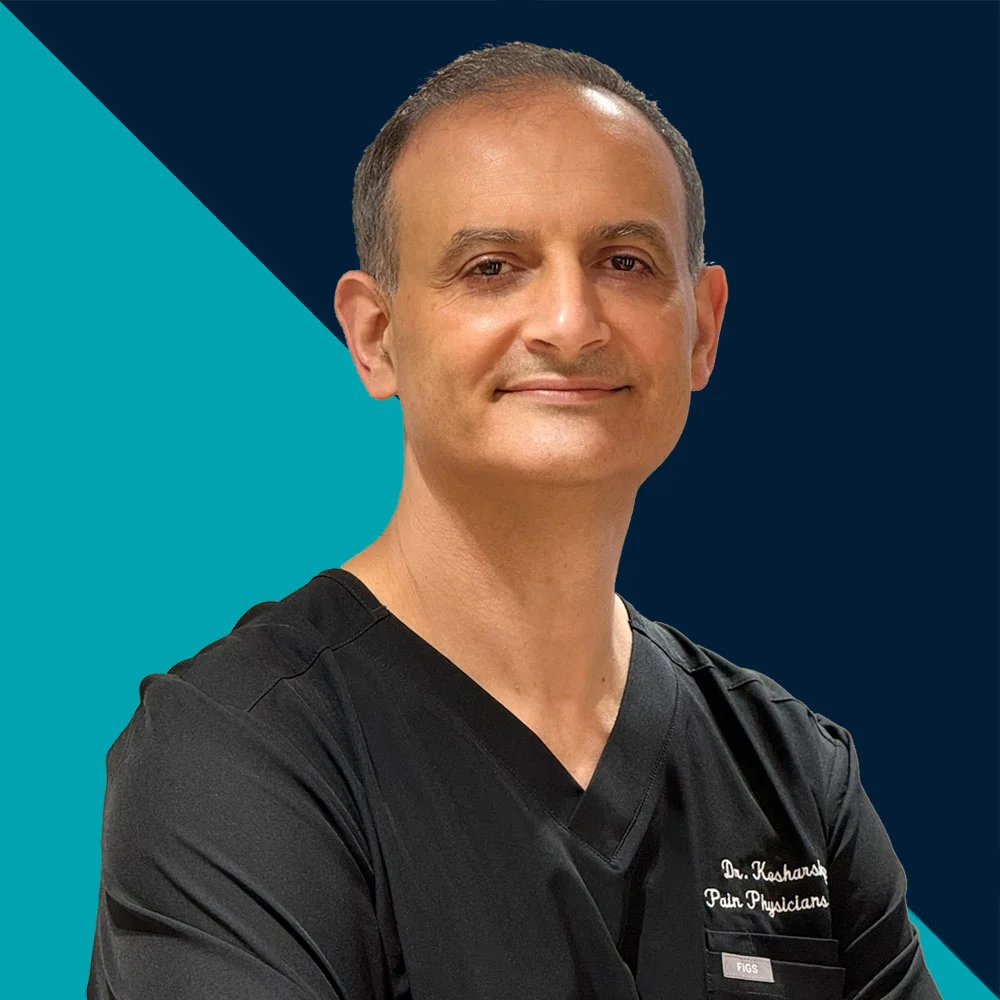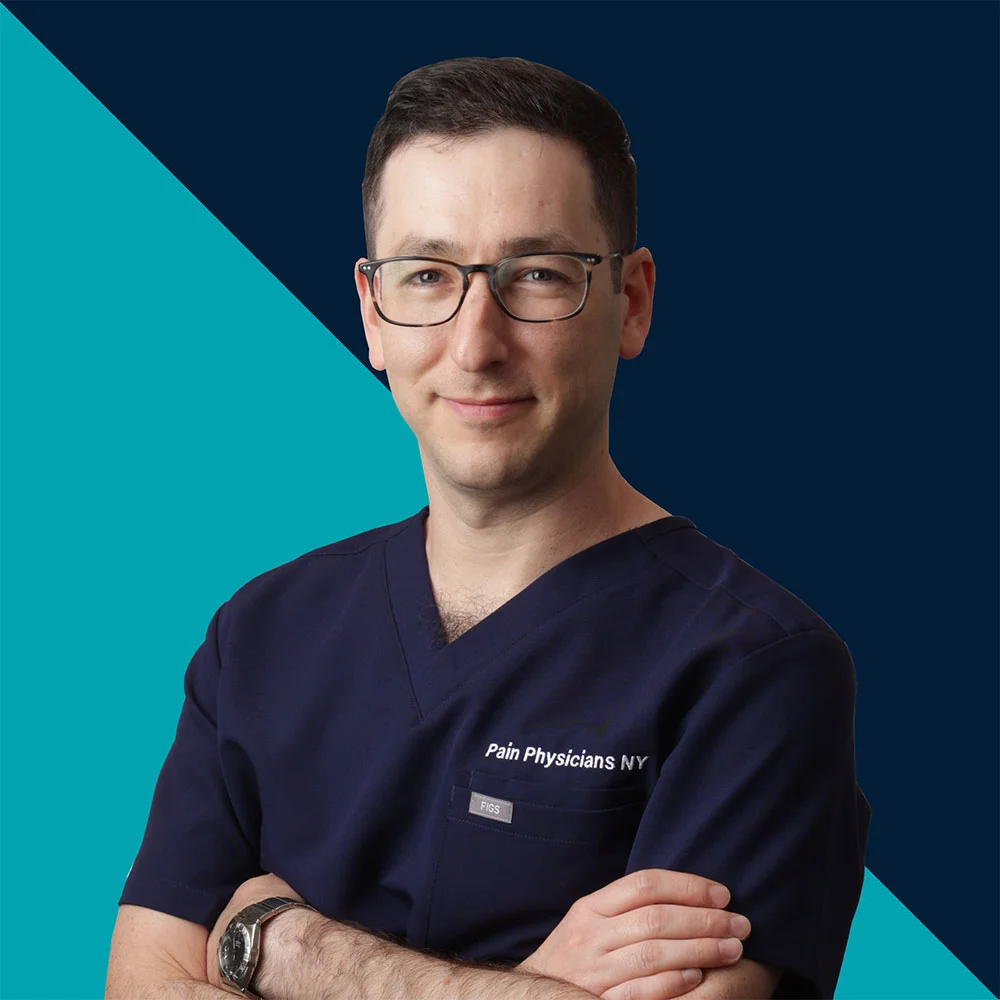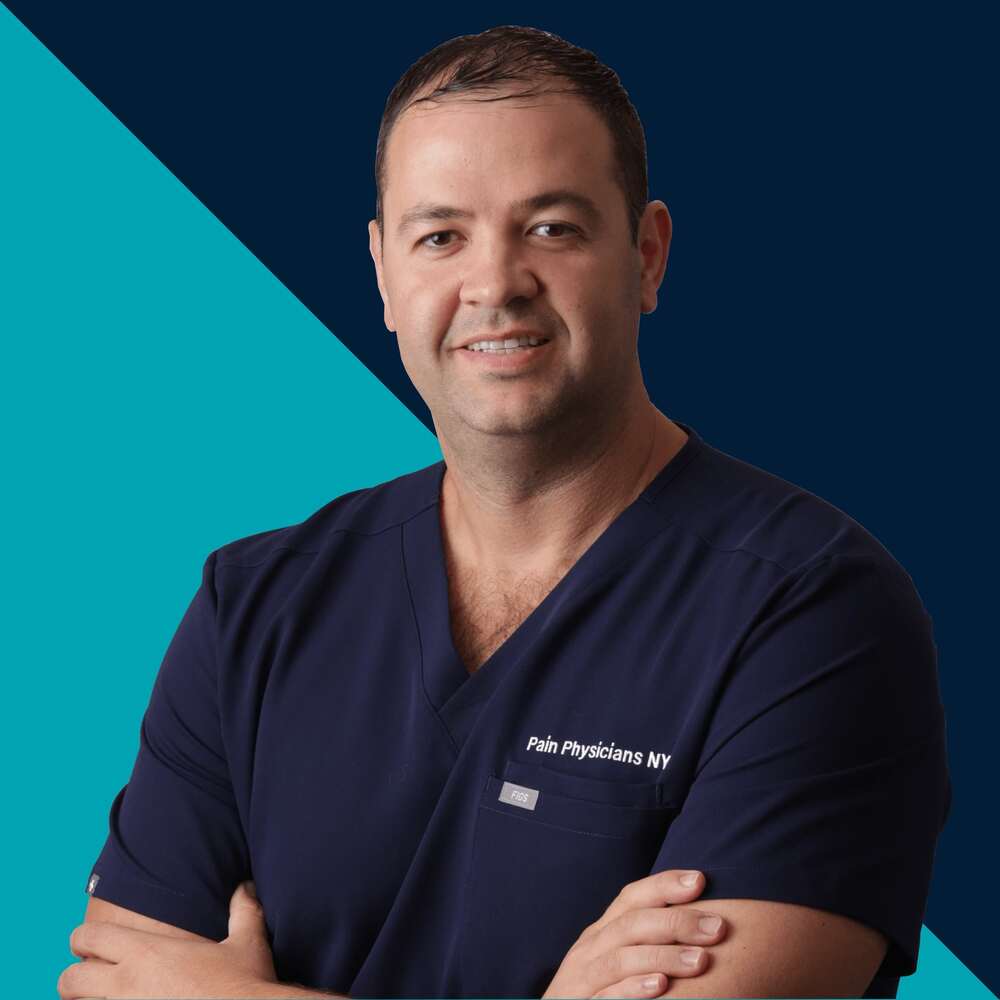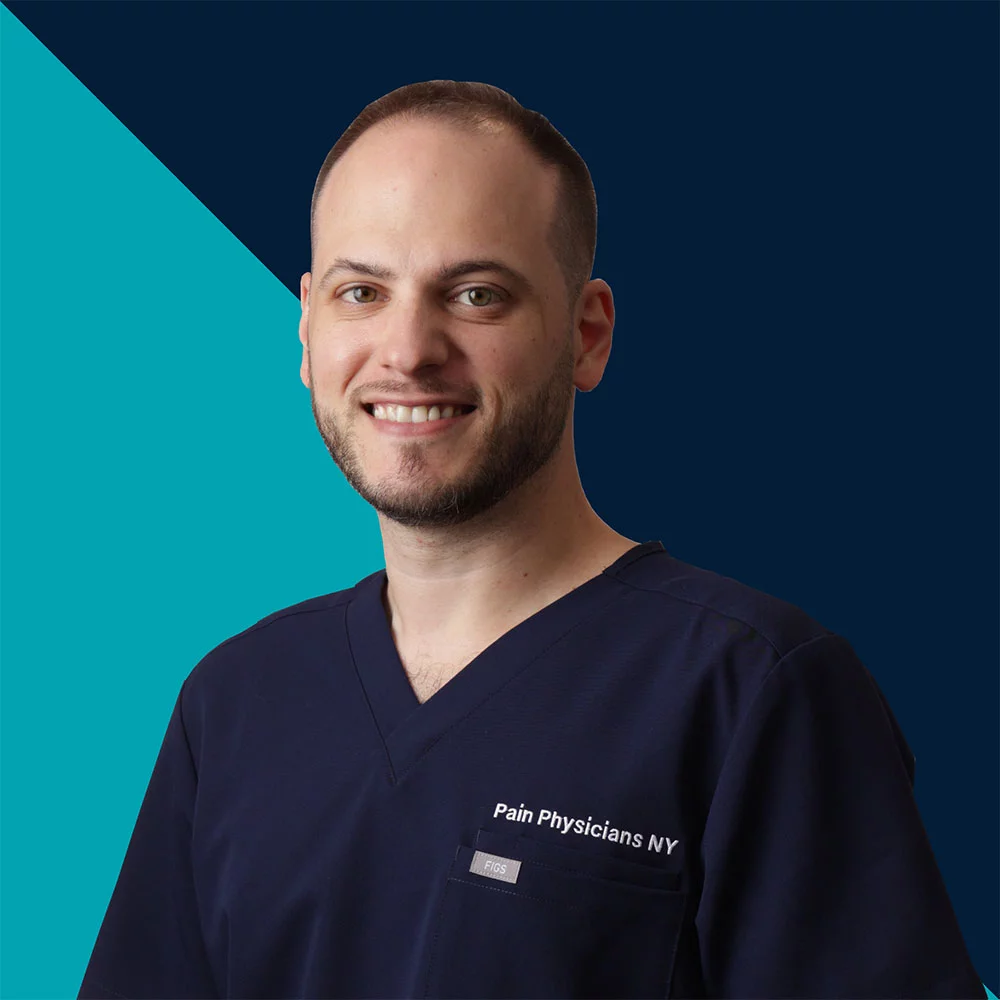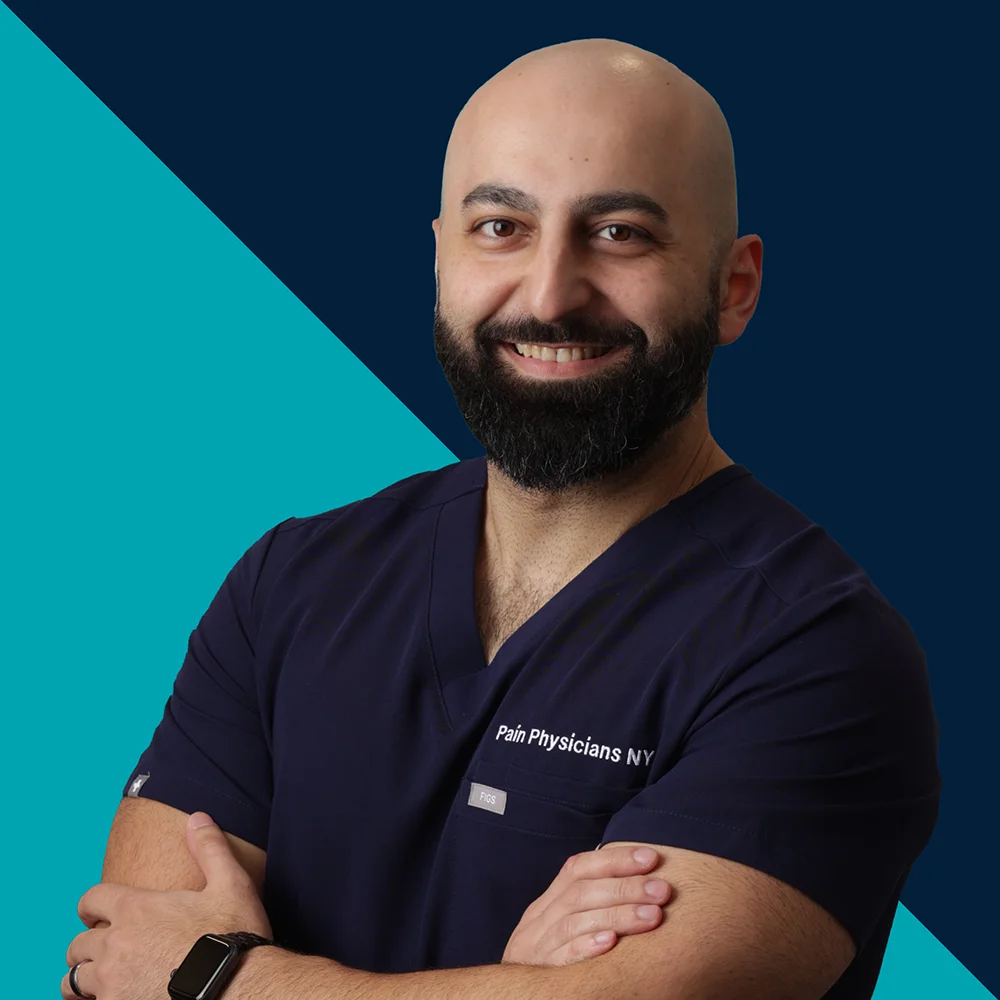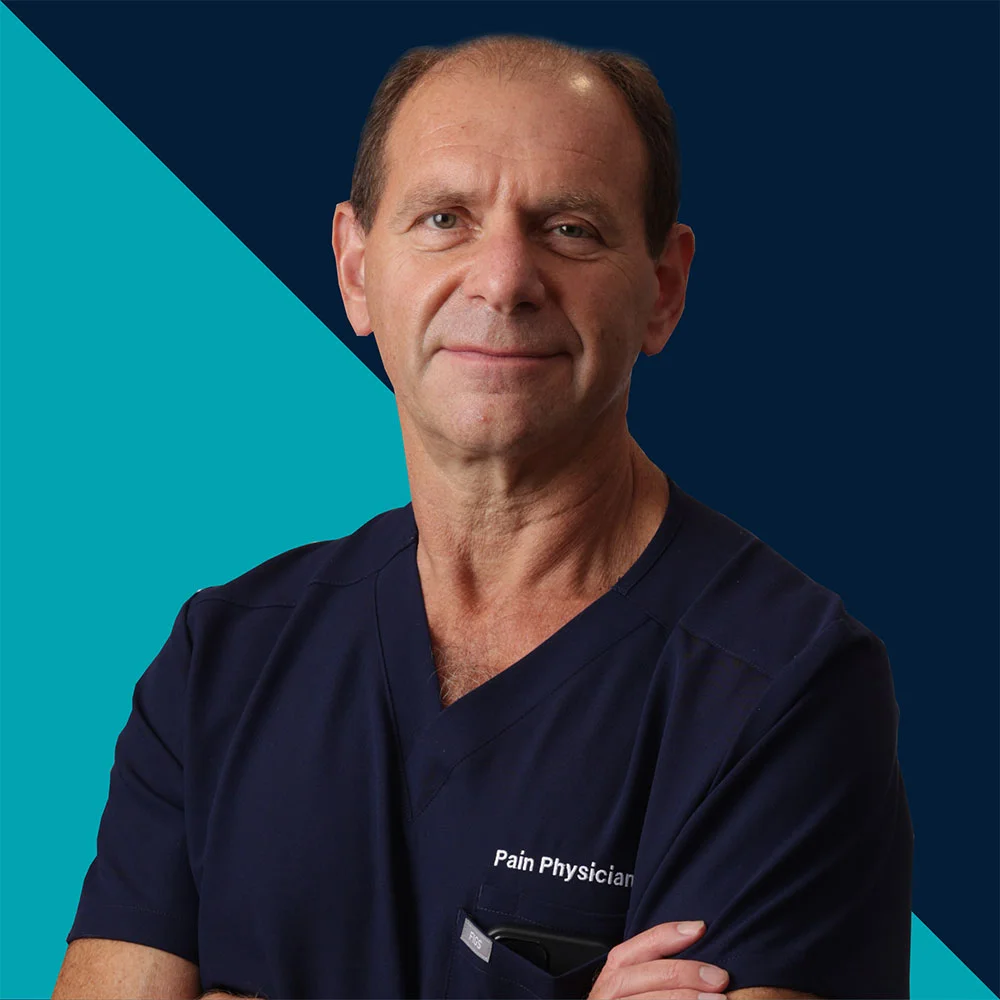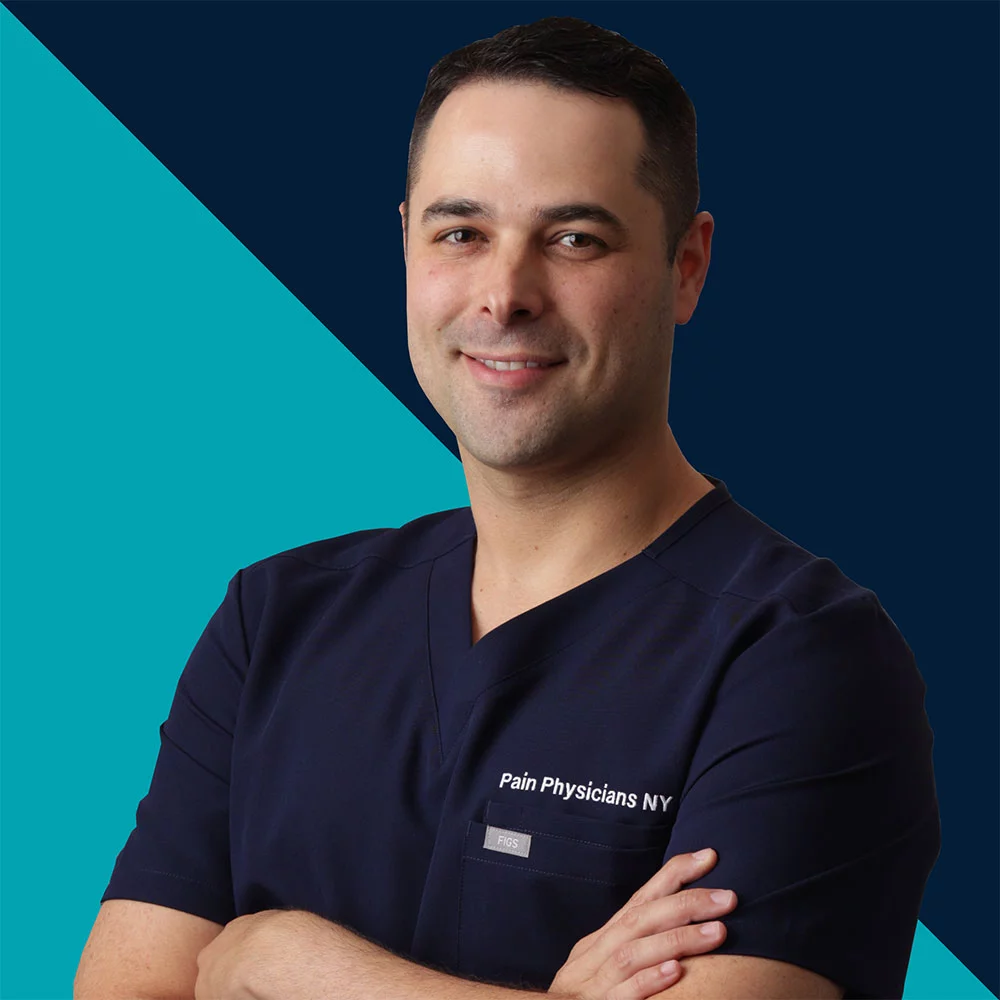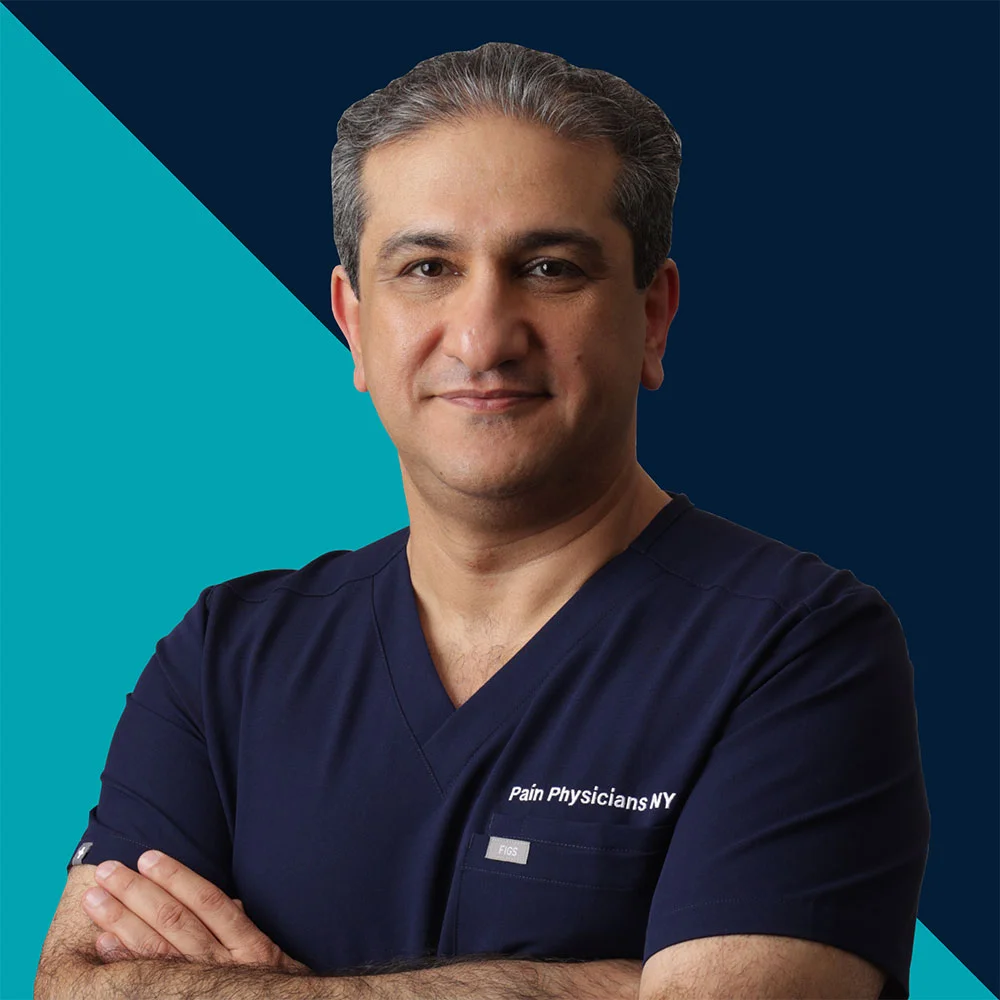Experienced knee specialists at Pain Management NYC provide advanced non-surgical treatments for knee pain, including corticosteroid injections, platelet-rich plasma (PRP) therapy, physical therapy, and minimally invasive procedures. Our team identifies the exact cause of your pain and designs a personalized plan to restore mobility and quality of life.
A Qualified Team of Knee Pain Specialists
With their extensive knowledge and years of experience, our doctors help patients achieve optimal treatment outcomes, often leading to faster recovery. We continuously incorporate the latest medical advances while keeping patient comfort and results as our top priorities.
Your knee provides movement and mobility while bearing the weight of your body. Because of all it does and all you put it through, it’s also susceptible to injury. Discomfort can show up in many different forms — from pain behind your knee to inner knee pain and posterior knee pain.
Knee Pain Diagnosis
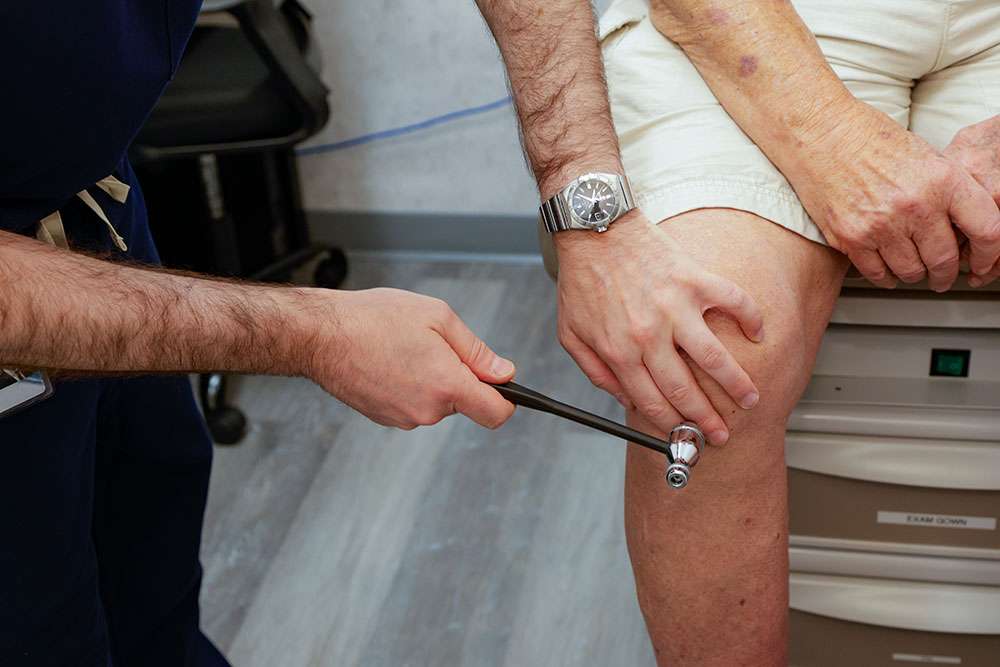
One of the first steps in diagnosing the causes of your discomfort is a physical exam. Your doctor can diagnose the cause of your pain based on this exam and appoint the appropriate treatment plan. For a more accurate diagnosis, your doctor may recommend additional imaging tests, including:
- Perform a physical examination to check for visible bruising, swelling, warmth, and tenderness,
- Check your range of movement by seeing how far your lower leg can move in various directions
- Assess the integrity of your knee structure by either pushing on or pulling the joint
Your doctor can diagnose the cause of your pain based on this exam and appoint the appropriate treatment plan. Additional imaging tests may be required for a more accurate diagnosis such as:
- X-Ray – Is used to detect suspected degenerative joint disease and bone fractures.
- Computerized tomography (CT) scan – In combination with X-rays, CT scanners generate cross-sectional images that of the inside of your body and can diagnose subtle fractures and other bone problems.
- Magnetic resonance imaging (MRI) – Creates 3D images by using a powerful magnet and radio waves. It can detect injuries to soft tissues like muscles, tendons, ligaments, and cartilage.
- Ultrasound – Generates real-time images of the soft tissue structures inside using sound waves. During this test, your knee specialist may need to move your knee into different positions to establish a more accurate diagnosis.
Around 25% of adults are affected by knee pain and over the last 20 years. Its prevalence has increased by 65%. This results in nearly 4 million people visiting a doctor each year.
Knee Pain Treatment Options
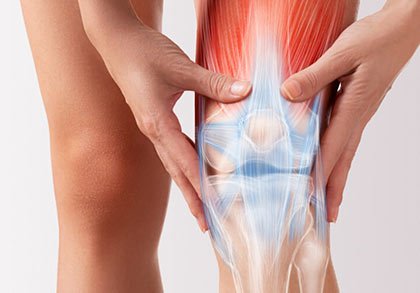
Pain Management NYC prioritizes non-surgical knee pain treatments, especially physiotherapy, as a conservative approach can often effectively resolve knee joint problems.
When surgery is necessary, we offer the most advanced techniques, including:
- Arthroscopic surgery for anterior cruciate ligament (ACL) repair
- Cartilage repair and transplantation
- Robotic-assisted partial knee replacement
- Meniscus repair and reconstruction
- Total knee replacement using minimally invasive approaches
Our experienced team of knee pain specialists works closely with each patient to determine the most appropriate procedure, aiming for optimal recovery, improved mobility, and long-term joint health.
Potential Dangers of Knee Pain
With so many moving parts, it’s no wonder that knee pain is one of the most common complaints in the U.S. Your board-certified knee doctors at Pain Management NYC consider all the possible complications that could arise in these heavily used joints, including:
Injuries can happen to anyone. The most common back or knee pain problems and accidents occur in teens who have suffered sports injuries. There are more than 2.5 million knee injuries reported every year. Seniors with low bone density, decreased balance and flexibility are at a higher risk of developing posterior knee pain. And a direct blow or fall makes up a good portion of cases involving aches in the knee.
What Our NY Patients Are Saying
Discover the success stories of patients who found relief from knee pain with our treatments.
Convenient Locations
Pain Management NYC operates multiple clinics throughout New York City, staffed by highly skilled best-in-class knee pain specialists. If you are experiencing knee pain and would like to schedule a consultation, our knee doctors in Midtown Manhattan, Bronx, or Astoria, Queens, are here to provide expert care and personalized treatment plans.
Frequently Asked Questions
What Are the Different Types of Knee Pain?
There are four main types of knee pain. These are:
- Anterior: pain that occurs at the front and center of the knee
- Posterior: pain that takes place in the back of your knee
- Medial: pain that arises inside of your knee
- Lateral: pain occurs outside the knee
Depending on the type of pain, your doctor will select an appropriate treatment plan.
Are There Any Home Remedies for Knee Pain?
If you injure, strain, or sprain your leg you may try the RICE technique. It stands for rest, ice, compression, and evaluation. This therapy will help you get knee pain relief at home. You need to apply a cold compress to the injured area. Then, wrap your knee with a bandage to prevent swelling. Avoid tightening the bandage too much since this may interfere with circulation. Keep your leg elevated while resting to decrease pain and swelling.
What Are the Symptoms of Knee Pain?
Knee pain is a common condition that affects many people of all ages. If you injured your knee you may also experience swelling, stiffness, and weakness along with pain. The skin around your knee may be red and warm to the touch. You may also hear popping and crunching noises while moving.
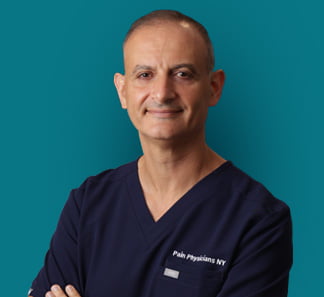
Boleslav Kosharskyy, MD, is a top-rated, best-in-class interventional pain management doctor. He is board-certified in Anesthesiology, Interventional Pain Medicine, and Palliative Care.
Dr. Kosharskyy is an Associate Professor of Anesthesiology and Rehabilitation Medicine at Albert Einstein Medical College. He’s also the Associate Medical Director of Pain Medicine and Director of Anesthesia for the Joint Replacement Center at Montefiore Medical Center and Albert Einstein Medical College.
He is an active member of the American Society of Anesthesiology (ASA), the American Society of Regional Anesthesia and Pain Medicine (ASRA), and the New York State Society of Anesthesiologists (NYSSA)

